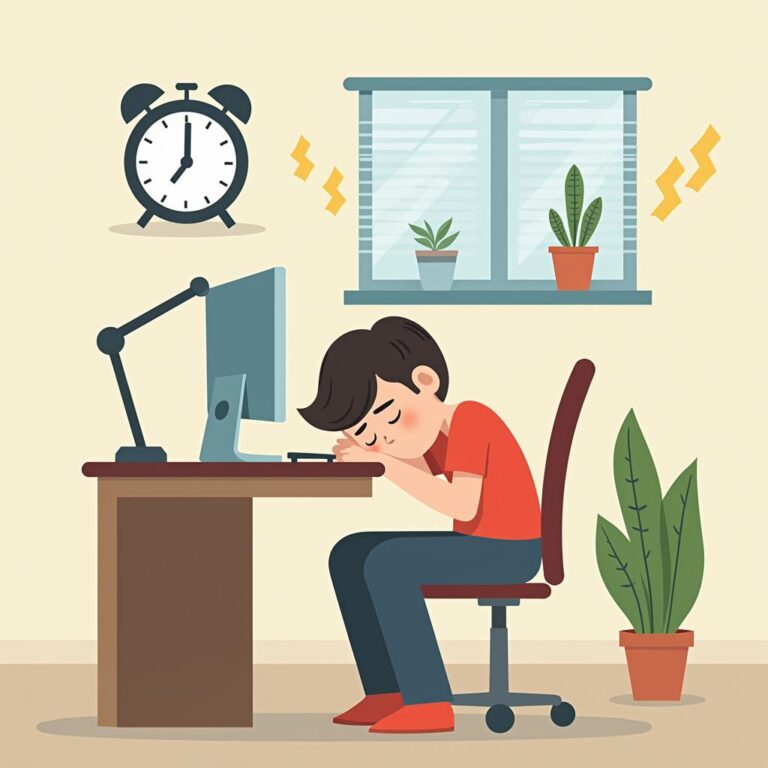In today’s fast-paced work environment, maintaining peak productivity is essential for success. One often overlooked strategy to enhance work performance is the power nap. This article delves into the benefits of power napping for work performance, providing insights and tips on incorporating this practice into your daily routine.
Understanding Power Napping
Power napping typically refers to short naps lasting from 10 to 30 minutes. These brief periods of sleep can provide rejuvenating effects, allowing individuals to wake up feeling refreshed and alert. Unlike longer naps that can lead to grogginess or sleep inertia, power naps are designed to optimize your energy levels without affecting your nighttime sleep.
Boosting Cognitive Function
One of the primary benefits of power napping is its positive impact on cognitive function. Studies have shown that a brief nap can enhance alertness, attention, and overall mental performance. When you’re well-rested, you are more capable of focusing on tasks, solving problems, and making decisions.
The improvement in cognitive function can also lead to increased creativity and better memory retention. For professionals who rely on innovative thinking and the ability to recall information swiftly, power napping can serve as a valuable tool in enhancing these skills.
Enhancing Memory Retention
Power napping has been linked to improved memory consolidation. During sleep, your brain processes and organizes information acquired throughout the day. By taking a power nap, you give your brain the chance to reinforce learning, making it easier to remember important information when needed.
Whether you are preparing for a presentation, learning new software, or trying to understand complex data, integrating power naps into your routine can help solidify that knowledge, ensuring you retain information for the long term.
Improving Mood and Reducing Stress
Another significant benefit of power napping is its ability to improve mood. Lack of sleep can lead to irritability and decreased motivation. By allowing yourself a brief respite, you can enhance your emotional well-being, making you more pleasant to work with and more motivated to tackle tasks.
Power naps can also help reduce stress levels. Chronic stress can impair cognitive performance and contribute to burnout. A short nap can serve as a mental reset, providing a break from work-related pressures. This rejuvenation can lead to a more positive outlook and improved resilience in facing challenges.
Increasing Productivity
Incorporating power naps into your workday can significantly increase productivity. Feeling refreshed and alert after a short nap allows you to tackle the rest of your day with renewed energy and focus. This can lead to faster completion of tasks and improved quality of work, ultimately benefiting both employees and employers.
Employers who encourage power napping can see a marked increase in overall productivity as their workforce becomes more engaged and efficient. A well-rested employee is a more productive employee, making power napping an investment worth considering for businesses aiming to boost performance.
Enhancing Physical Health
While the focus is often on cognitive benefits, power napping can also contribute positively to physical health. Short naps have been linked to a reduction in the risk of cardiovascular issues. Sleep is essential for heart health, and incorporating power naps can help provide the additional rest required to maintain optimal health.
Moreover, improved mental health can contribute to better physical health outcomes. By reducing stress and enhancing mood, power napping can lead to healthier lifestyle choices, including better eating habits and increased motivation to exercise.
Best Practices for Power Napping
To maximize the benefits of power napping, follow these best practices:
- Keep it short: Aim for naps lasting between 10 to 20 minutes. This ideal duration prevents grogginess and helps you wake up feeling alert.
- Choose the right time: The best time for a power nap is generally in the early afternoon, between 1 PM and 3 PM, when the natural circadian rhythm experiences a dip in alertness.
- Create a restful environment: Find a quiet, comfortable space to nap, whether it’s a breakroom, office, or a designated nap pod. Dimming the lights and using an eye mask or earplugs can also enhance the quality of your nap.
- Set an alarm: To avoid oversleeping, use an alarm or timer to ensure you wake up at the desired time.
- Practice relaxation techniques: If you struggle to fall asleep quickly, try relaxation techniques such as deep breathing or visualization exercises to help you unwind and drift off.
Conclusion
Incorporating power napping into your work routine can provide multiple benefits, from enhancing cognitive function to improving mood and reducing stress. By taking the time to rest your mind and body, you can boost your productivity and overall work performance. With the right strategies, power napping can be a game-changer in your work life, allowing you to approach tasks with renewed vigor and efficiency. Consider giving power napping a try to harness its full potential and enhance your professional success.







